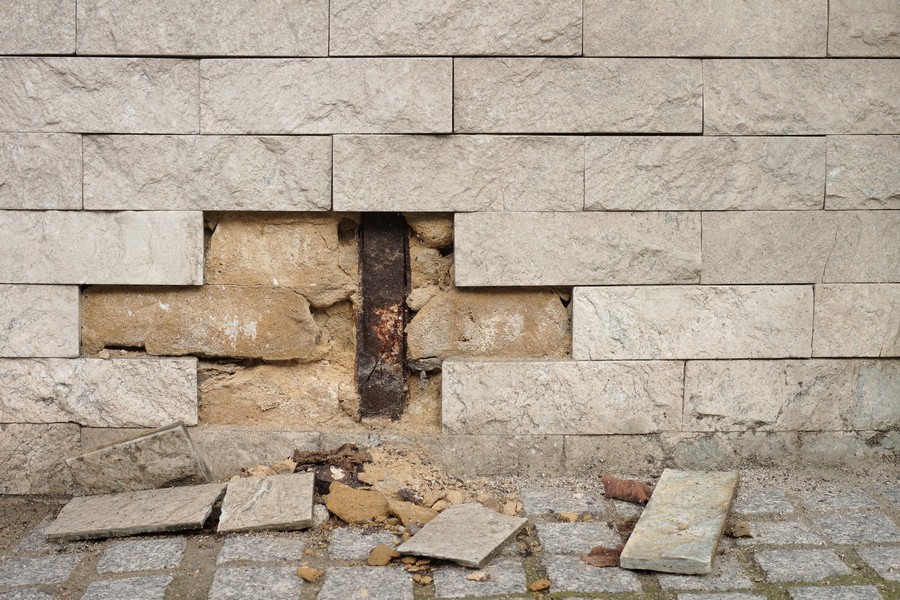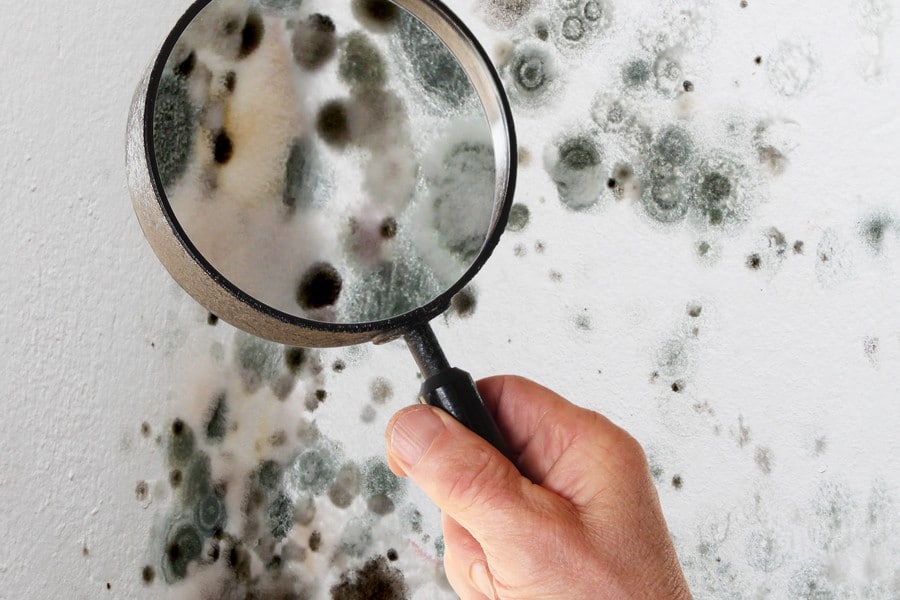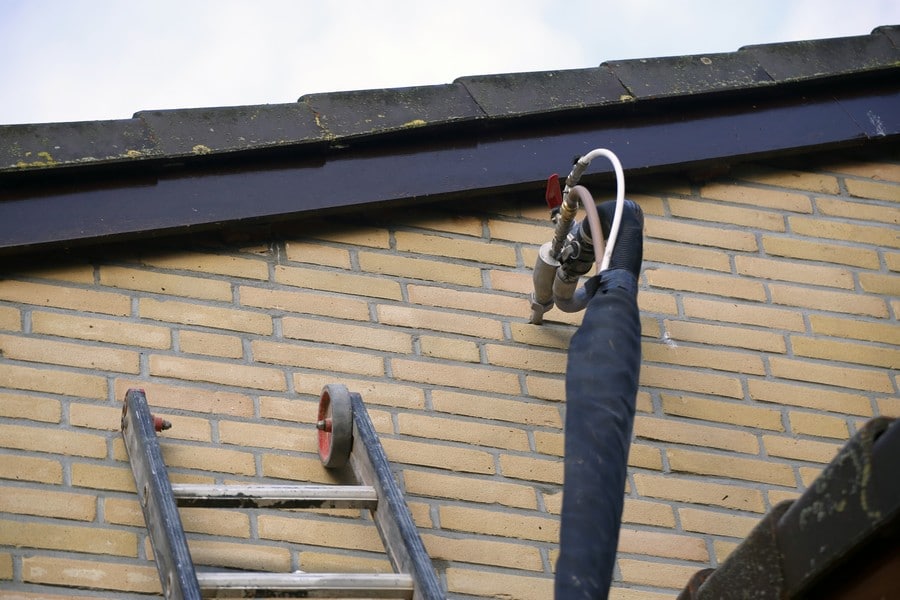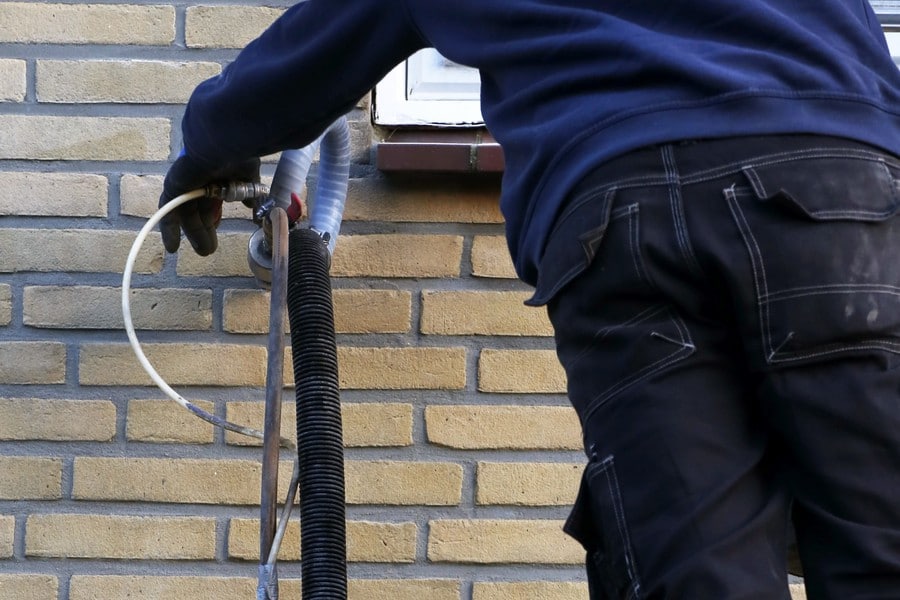Contact Sussex Damp Experts Now to Speak With an Expert.

Rising damp is a common problem caused by groundwater seeping up through the walls of buildings due to capillary action. The porous nature of bricks and mortar allows water to rise through them, leading to long-term aesthetic deterioration and tainting of plaster due to salts in the groundwater.
Some homes may not have been built with an effective damp proof course (DPC), or their existing DPC may have deteriorated over time, resulting in rising moisture that requires remedial work. This issue can also arise when high topography hinders the effectiveness of a building’s DPC. Hygroscopic ground salts are transported upwards into brickwork and plaster along with dissolved nitrates and chlorides from earth-bound water sources, causing increasing levels of salt build-up as water evaporates. A recommended treatment for rising damp involves using a quick, clean, and effective solution such as damp-proofing cream injection. To speak with one of our rising damp specialists about your concerns today, please call us on 01273 257 212.

Injecting cream is the most effective way to prevent rising damp. However, it may not be as effective if other factors are contributing to the damp problem. Therefore, conducting a thorough survey before taking any action is crucial. Our team of expert damp surveyors will perform a comprehensive property investigation and report on any existing damp issues in your building, including the extent of damage and necessary steps for mitigation or reversal of the problem. They will assess where the damp is located, its severity, potential future harm if left untreated, and type (wet rot, dry rot, condensation or others), and recommend an optimal solution accordingly. Contact our specialist team at Sussex Damp Treatments now on 01273 257 212 for a no-obligation site survey and consultation with our experts.

Contact Sussex Damp Experts Now to Speak With an Expert.
Over time, walls and skirting boards can deteriorate, resulting in discolouration and crumbling. If the damp-proofing is inadequate, moisture can penetrate through the walls. Additionally, water may seep in if the damp-proof course is lower than the ground level outside your home. These issues can lead to mould formation on both walls and floors. It’s crucial to address these problems promptly as they not only affect the aesthetic appeal of your home but also pose health risks to you and your family. Therefore, it’s essential to seek professional help from experts who specialise in treating dampness-related issues before they escalate into more significant problems that are costly to fix.
Penetrating damp can be identified through various signs, such as wet and leaking walls during rainy weather or flaking paintwork on exterior walls. Mould formation on walls and floors is also a common indication of penetrating damp. Additionally, leaks from guttering through your roof and ceiling may result in penetrating wetness. It’s crucial to address these issues promptly to prevent further damage to the property’s structure and potential health hazards caused by mould growth. Therefore, it’s recommended that you seek professional assistance if you notice any of these symptoms of penetrating damp in your home or building.
Condensation can cause several issues in your home, including water droplets on windows and unpleasant odours from black mould and green mould on walls. These symptoms are the most common indicators of condensation-related problems. Water droplets on windows occur when warm air comes into contact with cold surfaces, such as glass panes. This phenomenon is also responsible for the growth of black mould, which produces a musty smell that can be quite unpleasant. Green mould on walls is another sign of condensation and typically appears in areas with high levels of moisture.
Our comprehensive approach to treating and preventing rising damp involves a range of techniques and solutions. One highly effective and cost-efficient method is the injection of a silicone-based chemical into the wall through small holes, creating a water-repellent barrier inside the wall. To ensure optimal results, any internal plaster contaminated with salts from rising moisture must be removed and replaced with salt-resistant plaster that allows the natural drying of moisture in the wall. Following this step, we recommend installing a new chemical damp proof course using an advanced DPC injection cream containing Silane/Siloxane solution.
A tide line of yellowish or brownish stains or blown plaster in the lower region of your wall above the skirting board is a common indication of rising damp. In addition, decaying or moist floors and skirting boards are also signs.
Attempting a quick fix for rising damp such as repointing or painting over it will only increase costs in the long run and require redoing at a later date. To treat and prevent rising damp, we employ various techniques and solutions. One of the most cost-effective treatments with excellent long-term results at an affordable price involves injecting silicone-based chemicals into the wall through small holes.

A damp proof course is a water-resistant barrier that runs along the length and width of your wall, preventing groundwater from rising through capillary action. By attaching a special membrane to the construction, known as a damp proof membrane (DPM), moisture can be resisted. The DPM uses polyethene material positioned beneath a sheet of concrete to manage moisture while containing cement such as shotcrete which resists both pressure and moisture. Cavity walls are built between inside and outside walls to keep water out, while masonry walls are sealed with pressure grouting. Rising damp affects different types of walls in unique ways due to the varying physical qualities of the mortar used in their construction; therefore, it is important to seek advice from experts before choosing an appropriate solution for your specific situation.
After applying the rising-damp cream on almost all types of walls, it leaves behind a water-repellent barrier within the wall itself. To allow natural drying-out of any remaining moisture in the wall after application, some internal plaster contaminated with salts must be removed and replaced with salt-resistant plaster. Creating an effective barrier against rising damp minimises moisture content within the wall structure while reducing heat loss by preventing ground salt build-up.
The effectiveness of our damp proofing cream has been confirmed through independent testing on houses worldwide under a variety of challenging conditions. These tests included walls that were saturated up to 95% and mortar with varying levels of alkalinity and porosity.
The cream was also tested on both lime-based and cement-based mortars. The results showed that the cream performed efficiently in all scenarios, providing reliable protection against dampness. Our product’s ability to withstand such diverse test settings is a testament to its quality and durability, giving homeowners peace of mind knowing their property is protected from moisture damage.
The presence of rising dampness on exterior walls can lead to a host of problems, including rendering degradation, efflorescence and masonry fissures. To prevent further damage to the walls, it is recommended that they be treated with a damp-proofing cream. This solution effectively eliminates rising dampness and provides an added layer of protection against water penetration. For additional protection, an external masonry protection cream can also be applied to the exterior wall. Unlike the damp-proofing cream which is injected into the wall, this cream acts as another barrier against water infiltration without any injection process required. By utilising these solutions, homeowners can safeguard their property from potential structural damage caused by rising dampness on exterior walls.

The cost of a professional damp proof course (DPC) injection varies depending on the location and supplier. However, as a starting point, an estimated £70 per metre of wall treatment can be expected, which equates to approximately £275-£300 per wall for the injection alone. It is important to note that additional cosmetic work such as re-plastering and decorating after treatment will increase the overall cost but will significantly enhance your property’s appearance and provide peace of mind knowing that it will remain free from damp for many years to come. Investing in these improvements can transform your building into a more enjoyable space while also increasing its value.
Our team of damp proofing specialists possess the expertise to accurately analyse and diagnose the severity of any damp-related issue in your property. We provide bespoke solutions that cater to specific damp treatments, offering you technical advice on how best to tackle rising damp, woodworm infestations, dry rot damage, condensation issues and structural waterproofing. Trust us to deliver effective and long-lasting results that will protect your property from further damage caused by moisture intrusion.
Sussex Damp Treatments is a premier company that specialises in providing high-quality damp proofing, waterproofing solutions, and timber preservation services. We conduct thorough preliminary investigations to identify any property damp issues and provide detailed reports containing recommendations for necessary remedial work. Our non-destructive site inspections and surveys are conducted with utmost precision to ensure accurate results. Our team of experts provides pricing estimates based on the findings of the investigation while ensuring complete transparency in our charges. We offer comprehensive damp survey, damp and timber survey, as well as timber survey services to identify any concerns related to construction defects or previous ineffective remedial work.
At Sussex Damp Treatments, we take pride in our competent and friendly employees who deliver outstanding service from start to finish. Our team values knowledge, professionalism, and hard work, ensuring that you can relax knowing your property is in excellent hands. We specialise in comprehensive damp and timber reports with surveyors holding full qualifications from the CSRT. As members of a reputable organisation, we provide a comprehensive approach to older structures while maintaining strict confidentiality regarding client information. Our quick surveys and reports ensure efficient service delivery without compromising on quality. With us, you can expect a clean medical bill of health for your property as well as courteous employees who are always ready to assist you throughout the process.
Schedule a rising moisture survey with Sussex Damp Treatments, and we will connect you with a local team of experts. Our skilled damp surveyors are available to visit your property at your convenience. Contact us now at 01273 257 212 to book an appointment for a no-obligation site damp survey. Our team of professionals will provide you with expert advice and guidance on how best to tackle any issues related to rising moisture in your property. Trust our experienced team to provide the necessary solutions that will ensure the long-term protection of your home or business premises from any potential damage caused by dampness or mould growth. Call us today and let us help you safeguard your investment against the harmful effects of excess moisture in the air.


Max and his team have been at our property all week and I really can’t thank them enough for the fantastic job they’ve done on plastering both our walls and ceilings. They have literally transformed the appearance of our house! Not only has Ma…
From start to finish Max has been incredable. His knowledge lin damp proofing is second to none and his team where very clean and polite. The plastered finish was like glass so happy we choose Max Plastering for job.
Lovely bunch of lads left a very neat and clean job. Problem was solved.
Perfect Finnish and all left clean and tidy and no mess. Used Max previously and would not hesitate to ask him carry out more work.
Max, Harvey and Stuart arrived promptly as arranged. Done a great job on our outside rear wall. Work completed to a high standard, removal of all old material and cleaned up after themselves. I am so pleased with the standard of their work they ar…
They turned up on time and carried out the works in a very professional manor leaving the front of the house clean and tidy. Very impressed would definitely recommend.
I have to say that on every level Max (with Stuart and Harvey) did an extremely professional job! They explained what they were going to do, they were polite and courteous and respected that they were coming into our home. The plastering is of the…

I called max and he managed to come around the same day to do a survey. The next day I received an extremely detailed survey compared to any other damp proofer which made me feel very at ease that he was going to do the right job. Max and team tur…
Contact Sussex Damp Experts Now to Speak With an Expert.